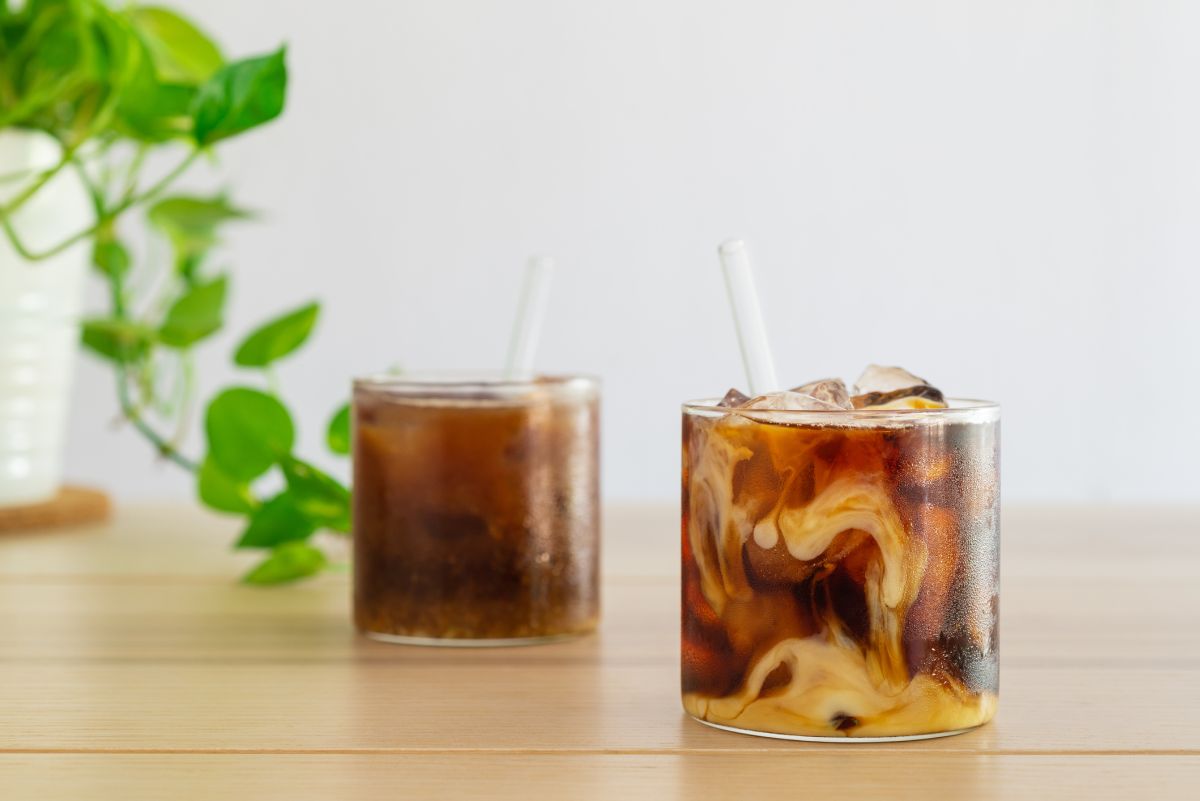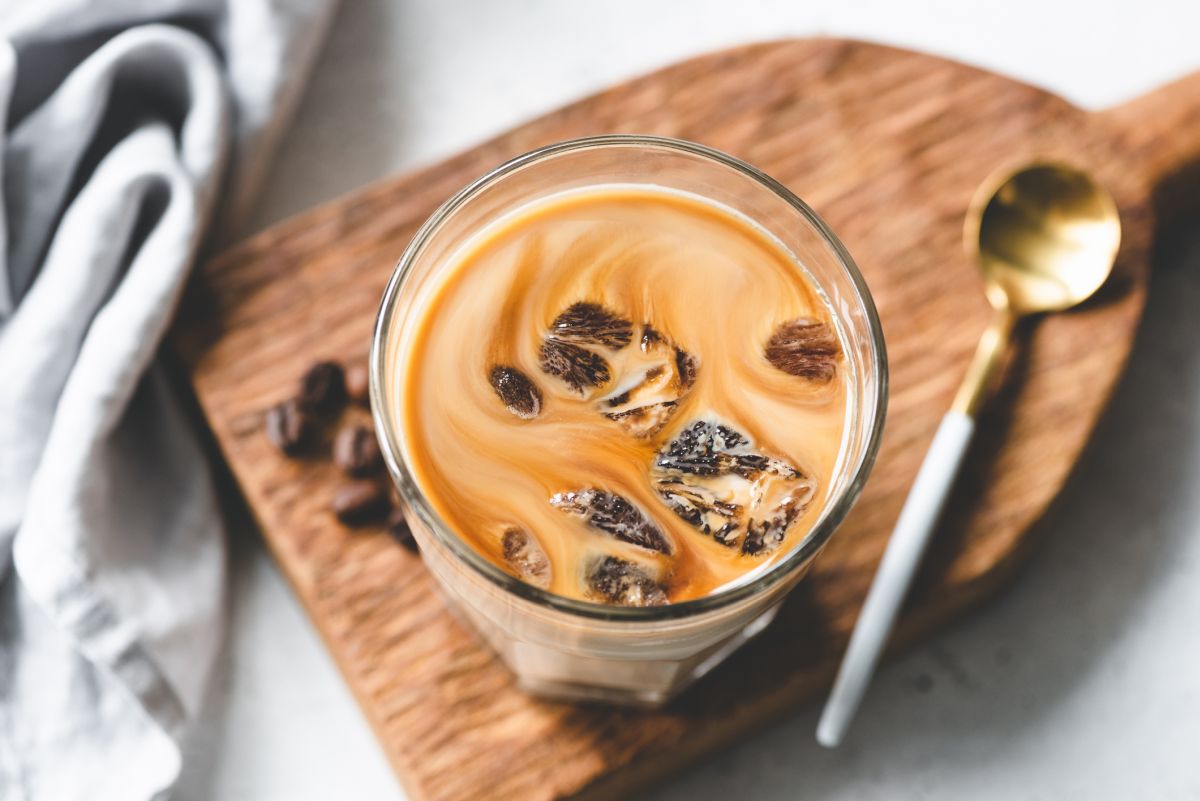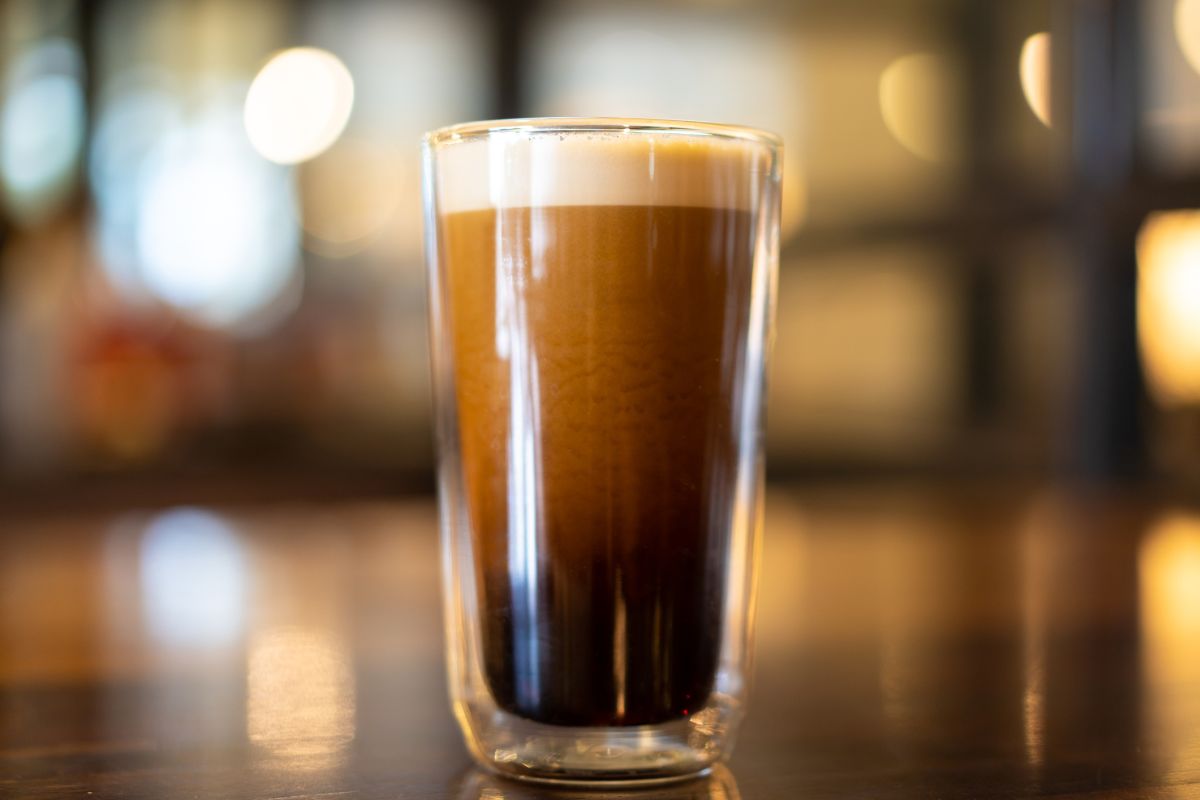Knowing the difference between iced coffee and cold brew coffee can make all the difference when it comes time to order a cup of your favorite joe.
Despite what you may think, these two types of coffee are made differently and are suited for separate occasions, which is why you need to take the time to distinguish between the two before your next coffee shop visit.
Key Differences Between Iced Coffee and Cold Brew Coffee
- Brew time: Iced coffee brews in minutes while cold brew takes 12-24 hours.
- Brewing method: Iced coffee is brewed using hot water over grounds, and the result is poured over ice. Cold brew is brewed using cold water over grounds over an extended period of time.
- How they are made: iced coffee is hot coffee that has been poured over ice, while cold brew is ready to serve once it is made as it is brewed cold.
- Taste: iced coffee is more bitter while cold brew is less acidic and smooth
- Price: Iced coffee is cheap while cold brew can get quite pricey
- Caffeine content: cold brew has more caffeine than iced coffee
- How long it lasts: iced coffee is best consumed within a day, while cold brew can be stored for up to 2 weeks.
What is Iced Coffee?
Iced coffee is a type of beverage that is brewed by pouring hot water over coffee grounds. The process takes only a few minutes, and the resulting product is hot. The coffee can then be poured over ice and additives like milk and sugar can be added.
Iced Coffee Flavor
Iced coffee and hot coffee have basically the same flavor, but some people claim that iced coffee tastes a little bit less bitter than hot coffee because it is diluted when the ice cubes melt.
Those who like strong coffee should brew the hot coffee using double grounds so when the ice dilutes the flavor it is still to your liking.
How to Make Iced Coffee
Step 1: Prepare Grounds
Place the coffee grounds in a filter and place them in a coffee machine. If you only have coffee beans, you will need to grind them before putting them in the filter.
Step 2: Brew Coffee
Press the brew button on your coffee machine and allow the coffee to brew.
Step 3: Chill the Coffee
The last step is to chill the coffee by either pouring it over ice or placing it in the fridge for about 30 minutes. You can also pour the hot coffee over coffee ice cubes (made in advance) to stop your coffee from being watered down.
Types of Iced Coffee
- Frappe—iced coffee blended with milk and sugar. Sometimes made with espresso.
- Iced Latte—made with espresso and milk poured over ice.
- Iced Macchiato—made with cold milk and espresso.
What is Cold Brew Coffee?
Cold brew coffee is coffee that is brewed with cold or room-temperature water. For this brewing process, the coffee grounds are steeped for at least 12 hours, but often closer to 24 or 48.
Because the grounds stay in the coffee for so long, this allows for better flavor extraction than regular brewing.
Cold Brew Flavor
Cold brew coffee is known to be slightly less acidic and also isn’t nearly as bitter because the flavor isn’t forcibly extracted from the beans using heat.
Because of these lower acidity and bitterness levels, drinkers of cold brew will find the beverage has an overall smoother texture than iced coffee.
How to Make Cold Brew
Step 1: Prepare Grounds
When making cold brew you will want to start with coarse ground coffee. If you use finely ground coffee, your cold brew coffee will turn out bitter.
Step 2: Mix with Water
Add 10 ounces of the coffee grounds with 5 cups of cold water in a pitcher. Stir with a whisk or spoon.
Step 3: Wait
Leave the pitcher at room temperature for 16 hours. If you want stronger coffee, you can let it steep for up to 24 hours.
Step 4: Strain the Mixture
Strain the mixture using a mesh sieve into a large bowl. Wash out the pitcher and pour the coffee back in. Strain a second time.
Step 5: Store
Pour the resulting mixture into an airtight container like a mason jar and place it in your fridge.
Step 6: Serve
When you want some cold brew, pull out the cold brew concentrate and put 1/3 cup in a glass. Then ad 2/3 cup of water. Add any milk or sugar you prefer and serve.
Types of Cold Brew Coffee
- Nitro cold brew—cold brew which is infused with nitrogen during the brewing process.
- Cold brew latte—cold brew mixed with milk.
- Cold brew concentrate—premade cold brew coffee that can be mixed with water whenever you are craving a glass.
Caffeine Difference
It’s difficult to specify the exact caffeine difference between cold brew and iced coffee as everyone brews their coffees differently. In general, however, cold brew coffee has a higher caffeine concentration, usually around 250mg of caffeine (when compared to 190 mg in an iced coffee) because of the length of the brewing process.
Plus, iced coffee is more diluted than cold brew, as the ice melts and dilutes the coffee a bit. With cold brew, the coffee is already cold and there is no need for ice, meaning there is little to dilute the caffeine content.
If you want coffee with the most caffeine possible, a cold brew is a better choice.
Which is Stronger?
When a coffee is referred to as strong, people are typically talking about the flavor as well as the caffeine content. If you want a beverage with a stronger, more coffee-like flavor, then sticking with a traditional iced coffee is best as it will have the acidic, more bitter flavor you’re craving.
But for those who want something with more caffeine per ounce of liquid and are okay with less acid and bitterness, cold brew is the way to go.
Price Difference
Cold brew coffee will almost always be more expensive than iced coffee. Cold brew is more expensive because it takes longer to brew, and quite a bit of grounds to make the same amount of coffee when compared to hot brewing.
Because of the high costs of labor involved with making cold brewed coffee, it should come as no surprise that you will pay two to three dollars more for a cup than compared to an iced coffee.
Which Lasts Longer?
Cold brew lasts far longer than iced coffee. Iced coffee, at best, is only good for a few hours to one day after it is brewed and then it begins to taste sour. Cold brew, on the other hand, can be made well in advance and kept in your fridge and used for up to 2 weeks.



Leave a Reply